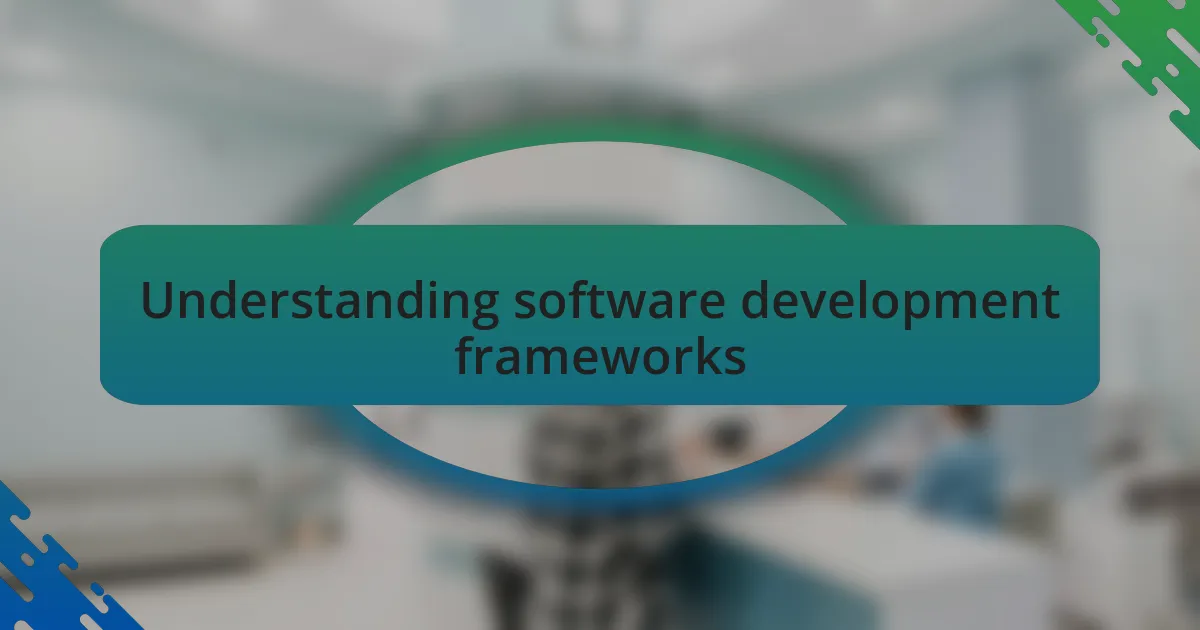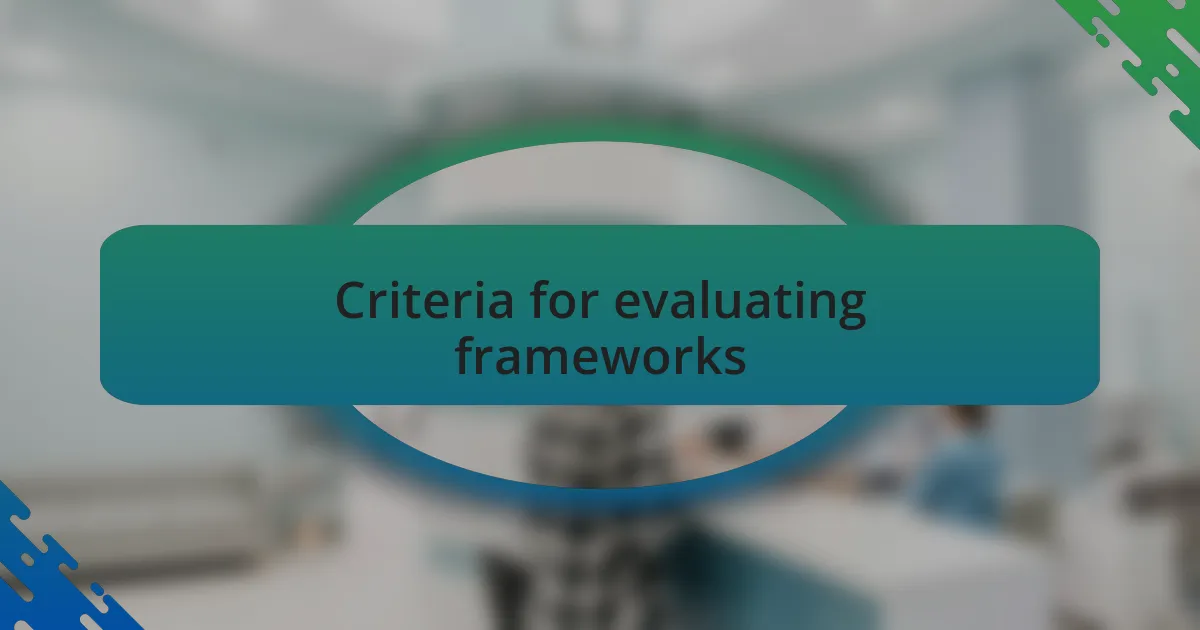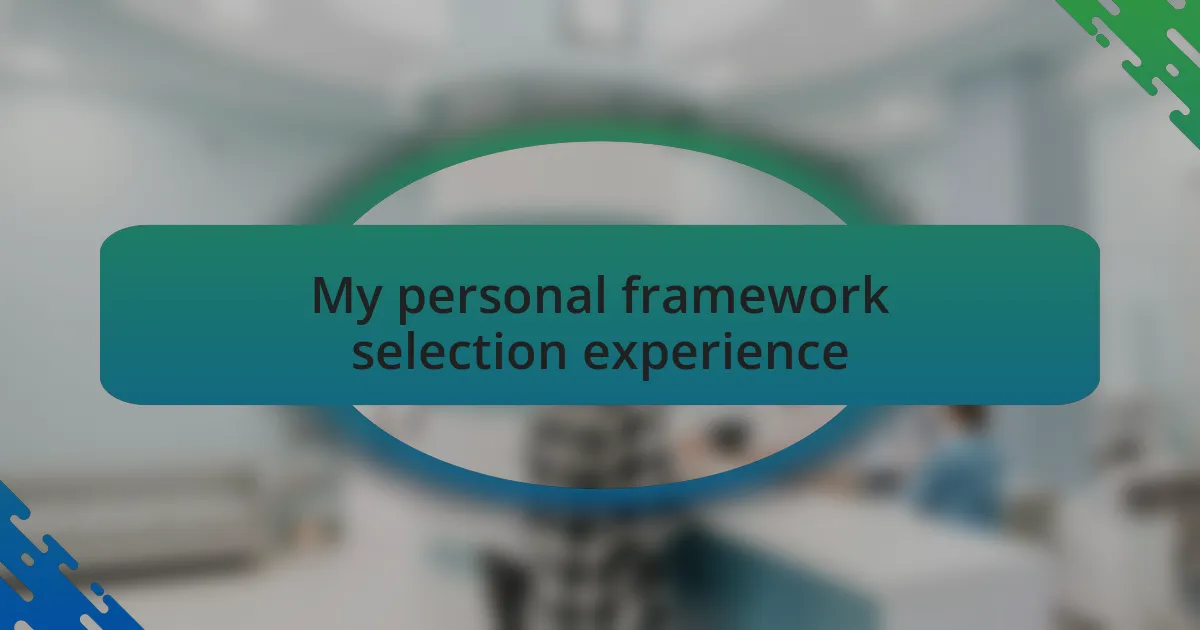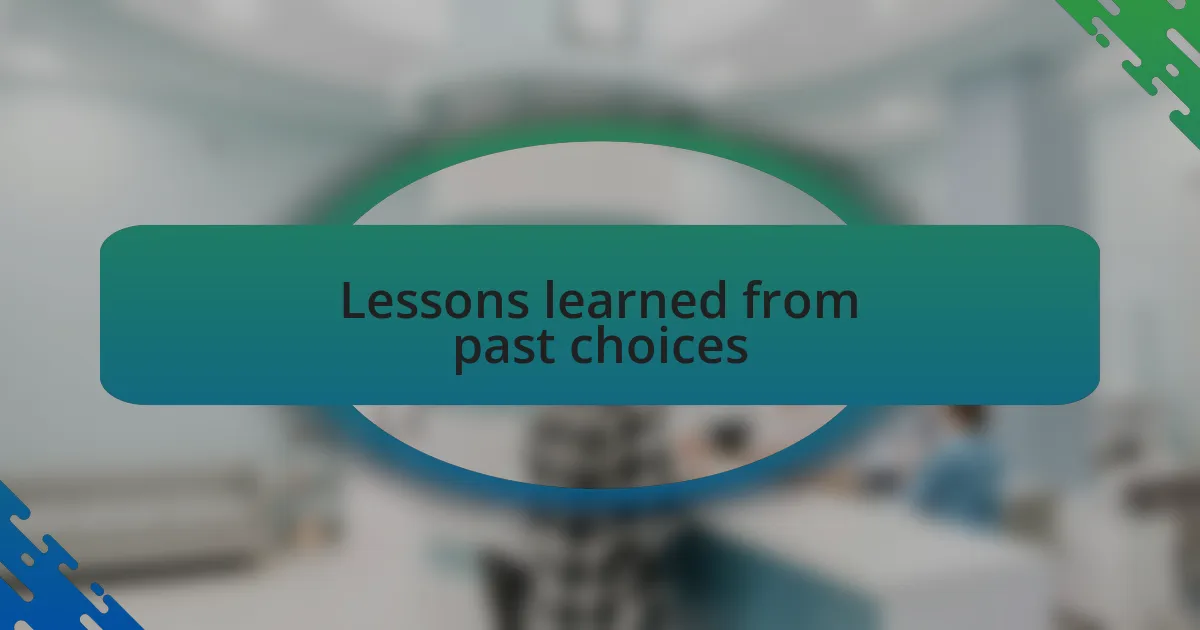Key takeaways:
- Choosing the right framework is crucial for aligning with project requirements and team skills, impacting both development pace and architecture.
- Critical evaluation criteria for frameworks include learning curve, community support, and scalability for future project growth.
- Personal experiences highlight the importance of sustainability and flexibility in framework selection, as well as the need to balance aesthetics with functionality.
- Frameworks like React, Angular, and Vue each offer distinct advantages and challenges, underscoring the diverse choices available in software development.

Understanding software development frameworks
Software development frameworks serve as essential tools in creating applications efficiently. It’s fascinating how these frameworks can significantly reduce development time and minimize errors, isn’t it? From my experience, choosing the right framework often feels like selecting the perfect outfit for a big event—it’s all about fit and function.
I remember a project where I stubbornly stuck to a familiar framework, thinking it was the best choice. However, I soon found that its limitations hindered our progress. This experience taught me that frameworks not only dictate the pace of development but also shape the architecture of the entire project.
Every time I dive into a new project, I ask myself: how does this framework align with both the project requirements and my team’s skill set? Understanding these nuances is crucial because a great framework for one project may become a burden for another. The right choice fosters creativity and efficiency, ensuring the development journey is as smooth as possible.

Criteria for evaluating frameworks
When evaluating frameworks, one of the first criteria I consider is the learning curve. I recall starting with a framework that promised speed but required extensive training to master. It was a frustrating experience; we had to invest not only time but also resources to get the team up to speed. Wouldn’t it be more efficient to choose a framework that aligns with existing skills? This very thought has guided my decisions ever since.
Another critical factor is community support. I’ve often found myself stuck with a tricky issue, and it’s usually the vibrant community around a framework that comes to the rescue. One time, while working late on a deadline, I posted a question in a forum and received help almost immediately. That sense of shared knowledge can make all the difference, especially when you’re racing against the clock.
Lastly, I always weigh the framework’s performance and scalability. During one project, I faced challenges when data loads increased, as the framework struggled to keep up. I learned the hard way that a framework that works well for smaller applications might not necessarily fit larger ones. It made me realize that finding a framework that can grow alongside your project is not just a preference but a necessity.

Popular frameworks in software development
One popular framework I’ve frequently encountered is React. I remember the first time I used it; the component-based architecture felt like a breath of fresh air. Suddenly, I could break down complex interfaces into manageable pieces. It made me wonder, why hadn’t I switched sooner? The community around React is robust, with countless resources available for both beginners and seasoned developers, which really eased my transition.
Another framework that often comes up in discussions is Angular. My experience with Angular was different; its opinionated structure initially felt overwhelming. I recall a project where I spent days just trying to grasp the concepts of modules and dependency injection. It made me question whether the framework’s benefits would outweigh the steep learning curve. Yet, once I got the hang of it, I appreciated how organized and powerful it could be for building scalable applications.
Then, there’s Vue, which I have found to be an excellent balance. I remember diving into it for a side project, and the simplicity of its syntax felt like a warm embrace. The gentle learning curve made it an inviting choice, and I couldn’t help but ask myself, what if more frameworks adopted this approach? The flexible integration options with existing projects only magnified my excitement, as it demonstrated how adaptable and user-friendly Vue truly is.

My personal framework selection experience
Choosing the right framework has often felt like searching for the perfect pair of shoes; there’s a blend of comfort and style that must be just right. I vividly recall a project where I was torn between React and Vue. I settled on React, thinking its community would support me through bumps along the way. Initially, however, I felt like I was walking on rocky terrain. Did I make the right choice? That frustration fueled a deeper understanding of the framework’s strengths and weaknesses, ultimately leading me to appreciate how empowering it can be.
In another instance, I was working on a tight deadline and opted for a popular back-end framework, thinking it would save me time. The reality hit hard when I stumbled upon numerous outdated resources and lack of clear documentation. It was a moment that forced me to reflect: am I chasing trends, or should I focus on frameworks that align with my personal style and the project’s needs? I learned that sometimes, what’s popular isn’t always the best fit for my workflow.
I often find myself drawn to frameworks that inspire creativity. I reminisced about a time when I experimented with Svelte for a hobby project. It felt like painting with a fresh canvas; everything clicked, and I was amazed at how quickly I could build and iterate. The thrill of watching my ideas come to life without the usual boilerplate energized me. Have I found a new favorite? This experience taught me that personal resonance with a framework can significantly enhance both productivity and enjoyment in the development process.

Lessons learned from past choices
In my journey with frameworks, one lesson stands out: the importance of long-term sustainability. I once dove headfirst into a trendy framework that promised rapid development. At first, it was exhilarating, but as my project evolved, I noticed the framework wasn’t keeping up. The thrill turned into panic when I confronted compatibility issues that slowed my progress. How could something that seemed so perfect initially lead to such frustration? It reminded me that what works well today may not be a reliable partner tomorrow.
Another poignant moment was when I relied heavily on a framework based solely on a single successful project. I had closed my mind to alternatives, thinking, “This must be the best choice.” But when a new project required flexibility and customization, I found myself wrestling with limitations. I realized then that a singular experience cannot define a framework’s effectiveness across all scenarios. Have I been too hasty in my choices? This taught me the value of maintaining an open mind and continuously exploring all possibilities.
I still remember a tough lesson when I chose aesthetics over functionality. I was captivated by a visually appealing, yet convoluted, framework that boasted impressive demos. As I dug deeper, I quickly discovered that the underlying architecture was a maze. I often ask myself, “Isn’t simplicity just as beautiful?” This choice became a profound reminder that visual appeal should never overshadow practicality. Balancing both elements is essential for harmonious development, and now I prioritize frameworks that embody both.